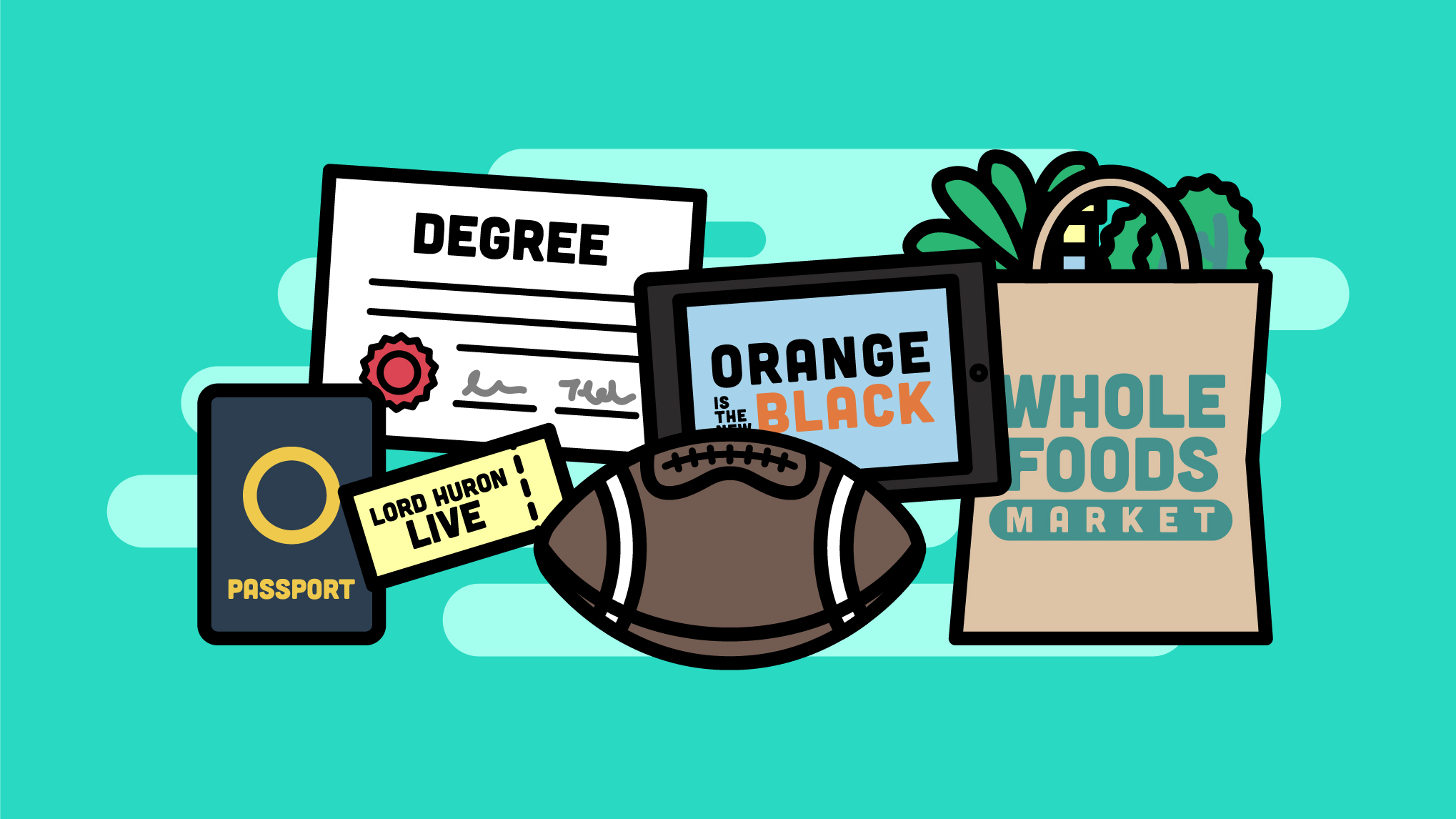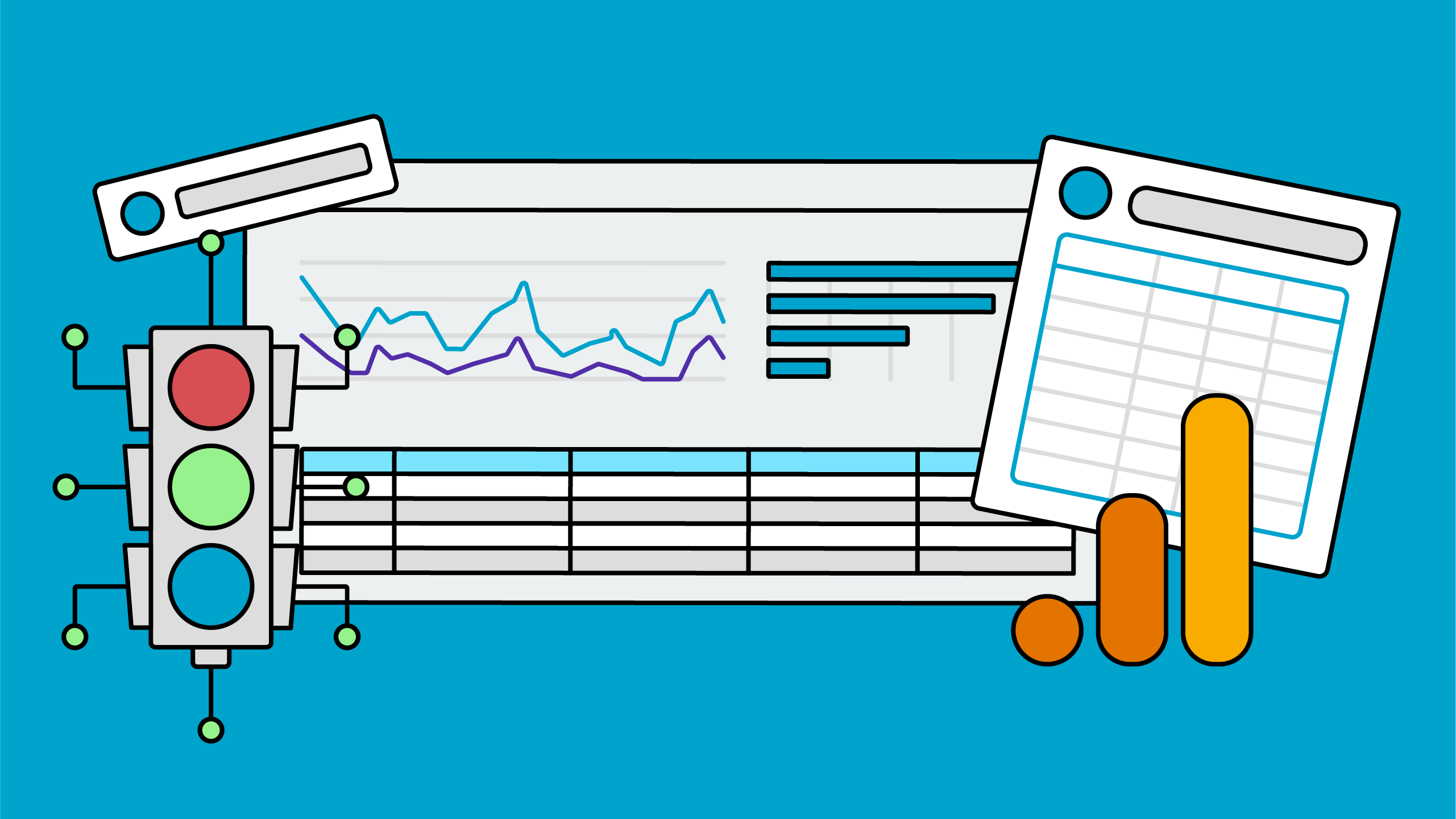The best posts we create at Kick Point are the ones where we sat down and asked ourselves “who is this post for?”
Here are a few recent examples:
- So You Need a (New) Website—The small business owner who is struggling with making the right decision on how to create their website. There are a lot of options, and they all promise great results. But who to trust, and what’s right for you?
- The Link Building Olympics—The director of marketing who has been working with a digital marketing agency for two or three months and is wondering when this whole link building thing is going to turn into higher rankings for their most competitive keywords.
- A Wild Natalie Appeared!—The marketing coordinator who is new in their career, subscribes to our newsletter, and likes keeping up on what’s going on at Kick Point.
Each of these personas keeps us on target with our own marketing efforts. In fact, this post has a persona as well.
What’s a persona?
Personas have undeservedly gotten a bad rap from some parts of the digital marketing world, because of poor implementation. Let’s be clear—personas must be based on fact, not fiction. If you use real data to determine your audience segments and then narrow down to a persona from there, you will end up with strong, impactful personas. These data-backed personas empower you and your team to measure the actual impact each of your personas has on your marketing budget.
If you didn’t create personas correctly, you’ll end up arguing over whether or not your persona is male or female, or which stock photo best sums up the happy-go-lucky millennial that you’re trying to capture. You will be guessing and assuming, and you know what happens when you assume!
Personas are a tool informed by data and research that define a specific segment of your market.
When developed properly, personas are not:
- Characters for your next great novel.
- Your buddy Gord who really likes your products.
- Difficult to measure.
You are not the target market
You’re nodding your head right now saying to yourself, yes, yes, I’ve heard this before—big deal. But let’s say it again: you are not the target market.
Your marketing is for your personas, not for you. Their motivations matter, not yours. When you are reviewing creative or copy, you’re not reviewing it for you—put on your persona’s clothes and shoes and evaluate things from their position. Just because a tagline sounds great to you doesn’t mean it will mean anything to your audience!
Everything you do, you do it for your personas.
What makes a persona good?
When you have a good persona, your boss will start nodding their head in agreement when you begin describing the persona. They know this persona! They can picture several of your current clients who match this persona perfectly.
The second important piece is that the persona must be findable and measurable. By findable, we mean that there is a way to target that persona specifically; by measurable, we mean that there is a plan on to segment and track that persona.
The role of research in marketing
If you are guessing you will end up failing. Put that on a poster with a rainbow and hang it up in every marketing and advertising agency in the world.
Empathy. Empathy. Empathy. How many times have you heard or read that word this week? It gets thrown around a lot, in the same way that eye-roll worthy words like “authentic” and “unique” and “passionate” often do. But what is empathy?
Empathy is a key characteristic of a successful marketer, and it’s also what separates an okay persona from a good one. Empathy is what lets you become one of your personas and discover what real world things actually affect that part of your audience.
Don’t make assumptions about empathy—do research to discover what empathy actually means for the people you want to connect with. Collecting demographic statistics about age, gender, and income doesn’t produce empathy. Relying on this type of data alone leads to assumptions and “personas” like this:

You need to go beyond this. Ask questions that educate you about who your audience is beyond just simple demographics (that your competitors likely have the exact same access to).
The Canadian magazine Chatelaine does a special feature called “This is 40ish”, where they interview Canadian women between 35 and 45. The questions cover a wide range of topics, including “are you a feminist?” and “do you look good naked?”.
Here are some answers to the question “what makes you unique?”:
Even these tiny story snippets build empathy. You know these 40ish women a little bit better now. Empathy changes people on your website from just numbers on a screen to real people who are affected by your marketing decisions.
Why personas make people nervous
You will get pushback when you suggest developing specific personas for your company—especially from people who are used to the idea that you buy a billboard, 80,000 cars drive past every day and then maybe a couple of people will be interested and visit your website or pick up the phone.
If you can narrow down your audience to 1,000 people who reflect who your best client is, and then talk directly to those people in the method that works best for them instead of putting up a billboard and hoping for the best… well, it’s easy to see how that could potentially affect your marketing budgets and results.
When you engage in persona marketing, you end up spending less money on spray and pray marketing techniques.
Your budget is then available to invest in the channels and messages that your personas are actually paying attention to. To put this another way, if your website conversion rate is only 3%, that means that you’re failing 97% of your visitors.
Only in marketing are we allowed to have a 97% fail rate and call it a success.
How to build a persona
Put together a list of your best clients. What do these clients have in common? If you are a new business and don’t have current clients to lean on, talk to the clients of your competitors. Please email us if you want to discuss how to effectively make these people feel valued and willing to assist you.
Investigate social media
What do these clients share and where do they hang out? If you don’t already know their social media profiles, you can use FullContact to get their profile information using their email address. You don’t need to be a programmer to get this data, either—they have an Excel spreadsheet you can use. All you need to is sign up for an API key.
If your clients are on Twitter, use BuzzSumo to learn what they tweet about. Use their Influencer search and search for their Twitter @username—for example, if you wanted to view my information, you would search for @danaditomaso, and this is what you would see:
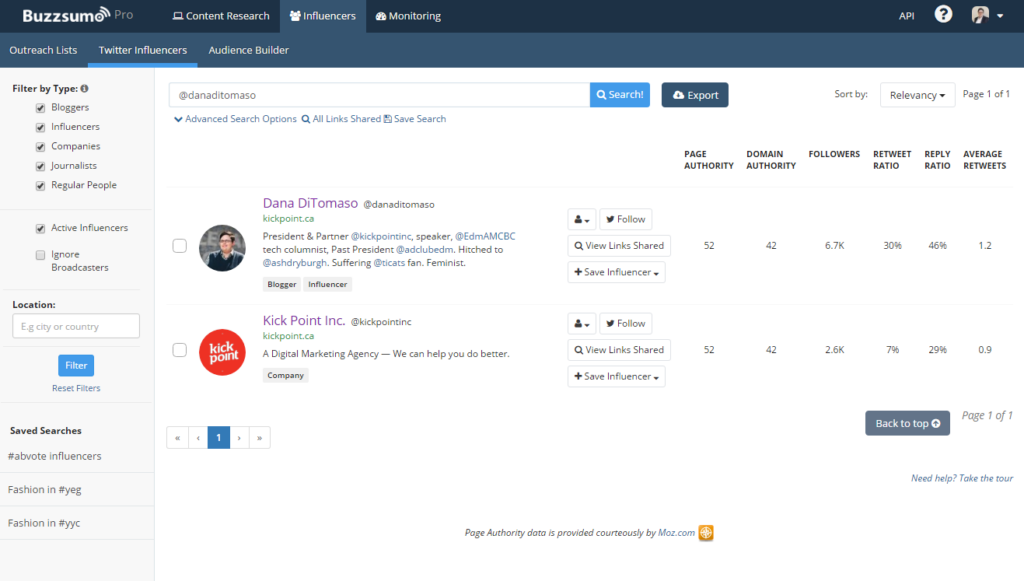
Click the View Links Shared button and you can see all the links Dana recently shared on Twitter. There is even a useful pie chart, which shows that Dana reads The Verge a lot:

You can draw a lot of conclusions about Dana and her online behaviour by seeing these sites that she shares regularly. What do your best clients share?
Pick up the phone
Have casual conversations with your best clients on the phone, and don’t use a script. You rarely gain insight from reading interview questions from a template. Start with some basic questions to get the ball rolling, but then take cues from their answers to build follow up questions. As soon as you go the templated interview route, you open yourself up to perfunctory, bland answers that will do nothing to advance your knowledge.
Embrace the art of conversation and let each discussion flow freely.
For example, if you start by asking why they chose to work with you, and their answer is that they liked your approach, move on to questions that focus on what your client understands about your approach.
“Was it always clear that we would approach X that way?”
“During Phase 2, we shifted our approach based on Y conversation—and we felt that impacted how quickly your team was to respond to Z. What are your thoughts on that?”
We conducted phone interviews on behalf of a client who wanted to find out if their audience was on social media—and if so, what they used it for. Our conversations started off with “what social networks do you use”, and then we would dive into why they joined, who they follow, and what compels them to share something.
Asking something like “would you describe yourself as a Twitter expert” doesn’t work well, but you can ask “how many people do you follow on Twitter?”. If they know the answer, they’re on there enough to be paying attention and that indicates to you that they are a more advanced user.
Ask sales and support
These are the people who know your clients the best. They see your clients at their worst and at their best, and deal with them every day. Start attending sales meetings and listen in on support calls.
- What are the common themes that keep coming up?
- What questions are asked the most?
- What is the number one thing that clients do or say that frustrates your sales and support teams?
Don’t use focus groups
Read this great piece by Erika Hall. If you don’t have time, We’ll sum up—people are really bad at knowing what they want and focus groups are a totally artificial construct. In our experience, one additional problem that comes up is that the loudest person in the room ends up running the show. Avoid.
Tie it together
Through this research, what are the commonalities that you’ve found? How does that fit into your different client segments? One of the tests we use is whether or not we can answer this question for a persona:
I am a (blank)
Who wants to do (blank)
So I can (blank)
When you’re able to come up with several iterations of this formula, you are ready to start developing personas. Remember: this isn’t a creative writing opportunity—these are real people and the attributes you assign to them must be grounded in facts. Empathy first, creativity second.
When it comes to writing out the persona itself, please check out this post by Brittany—it includes a real-life example.
How many personas is too many?
Cap your personas at three to five, at least to start. You may find a brilliant sixth persona down the road and we don’t want to limit you. However, once you start to get towards seven and up, you’ll find that you’re really splitting hairs as to what actually differentiates these personas from each other. Remember— don’t focus on comparatively small details such as gender (unless you work in say, feminine products). That isn’t enough to differentiate a persona.
Now what?
It’s time to turn to data to segment your personas. One of the easiest ways to track personas is via website visits, especially if you have specific landing pages for each persona. If they visit page X, they must be a part of this persona X—very simple. However, you may have a large website, or a complex buying process, which means that it will probably take more than one pageview to determine if a visitor is a specific persona.
In either case, you can create a custom segment in Google Analytics of anyone who has visited those specific pages.
Here is an example of how we did this for a client. Each persona is a custom segment in Google Analytics, based on their visitor behaviour.
- Persona A’s focus is Goal 5.
- Persona B’s focus is overall conversions—there are many different ways they convert.
- Persona C’s focus is Goal 4.
- Persona D is a negative persona—they will visit an informational part of this site regularly, but we don’t actually expect them to convert.
We used letters for the personas in this example—but you should use real names to keep track of your personas!
The Google Analytics screengrab below shows how this happens on the website:

You need to set up each customer segment—this is Persona D, for example:
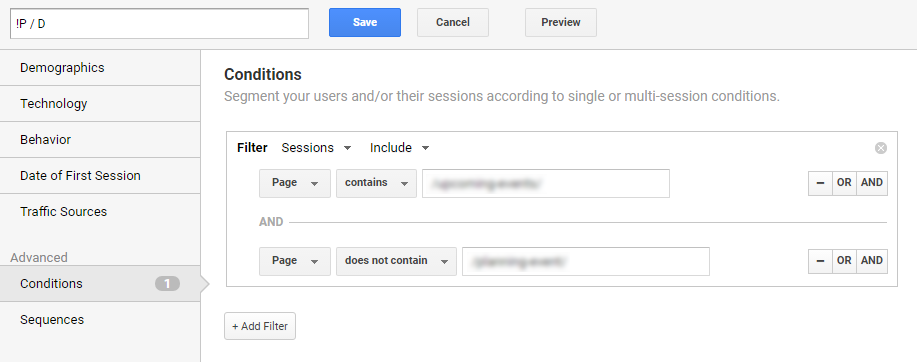
You can also use the Sequences option to build more complex personas. For example, let’s say you have a tracking URL that you use in bus ads. When someone visits that URL, it will redirect to your landing page using UTM codes, and the source/medium is OOH/bus. This is what that URL would look like, after the redirect:
http://yourwebsite.com/landing-page/?utm_source=OOH&utm_medium=bus&utm_campaign=amazing-bus-ad&utm_content=v2
In the URL, you will notice that we used the campaign name: Amazing Bus Ad, and named the content: v2—it’s important to include a content variable so that you can differentiate between ads.
What we are looking for is a persona who has come to the site via that bus ad, and then looked for more information on a specific topic after viewing the landing page.
This is what that would look like in your custom segment:
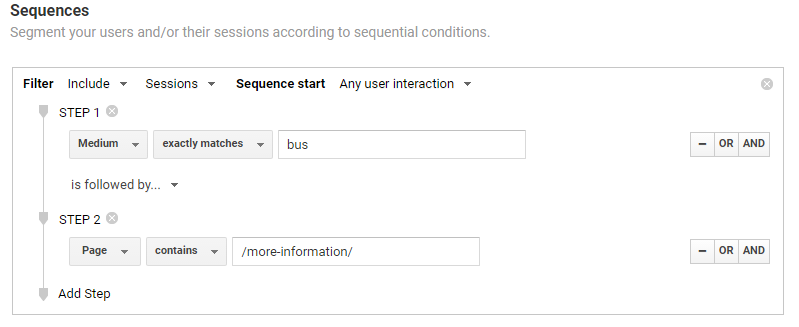
Once you have your personas ready to go, use our custom Google Analytics report to create your own report. You will need to edit this report and add in your own goals.
The report also breaks down the sessions by channel for an even deeper analysis. For example, did one persona’s conversion rate improve after you tried new ad copy, and what happened when you tested a new layout for your landing page?
Persona-driven decision making
With this data, you will be able to make smarter marketing decisions. You will save time and budget, and avoid missed opportunities. Perhaps Persona A has a 40% higher conversion rate than the rest of your site visitors—well, then you should then invest more budget on this specific persona.
Or, maybe Persona B looked like a great source of new business for your company, but it turns out that they’re a total nightmare for your support team.
Or, a local publication has approached you about an advertising opportunity, but you know based on your research that your personas don’t even read that magazine.
Decisions that have been difficult are now far easier because you have persona-driven data to guide you.
The answers to your marketing questions are out there, living in the hearts and minds of your current and potential clients and customers—you just need to ask the right questions. Getting these answers builds empathy for you and your marketing team, teaches you to build personas that you can actually use and track, and ultimately, these answers will make your customer and client relationships stronger.
Remember: don’t just hope for the best with guesswork and assumptions—ask questions and perform thorough research and you will actually be able to do your best!
